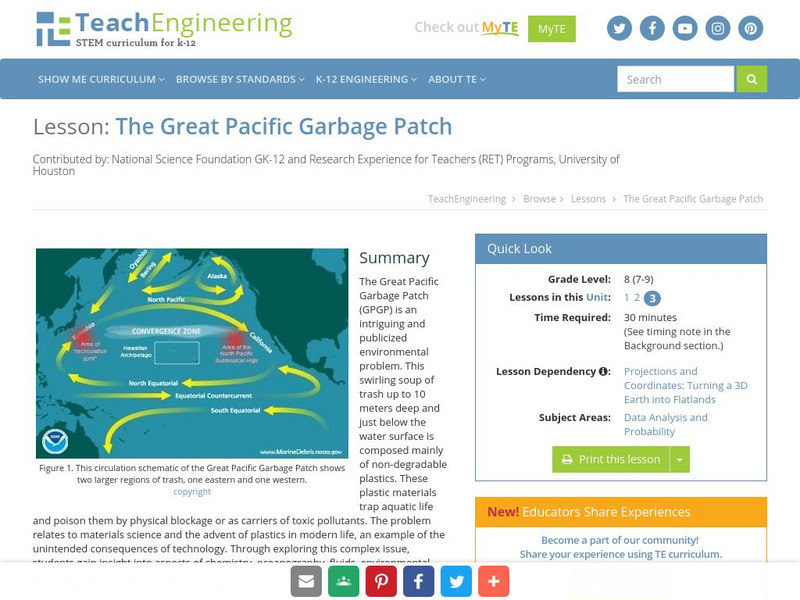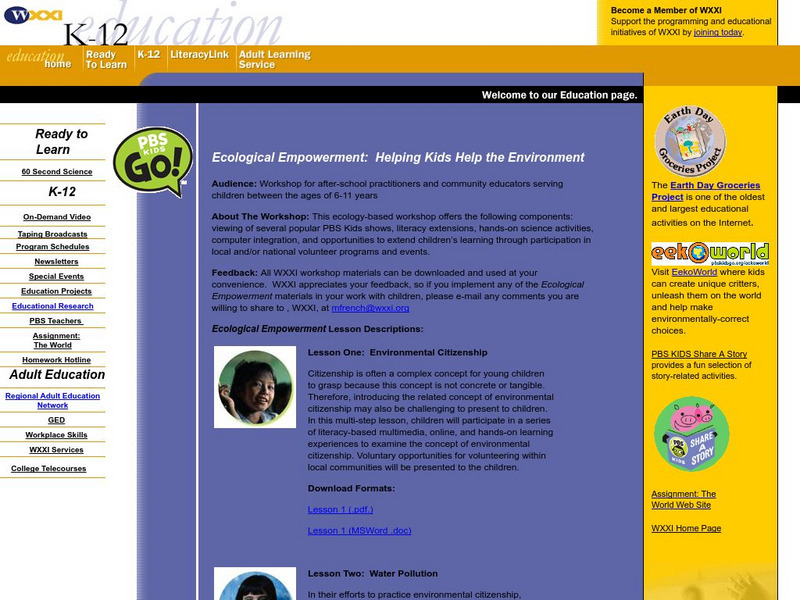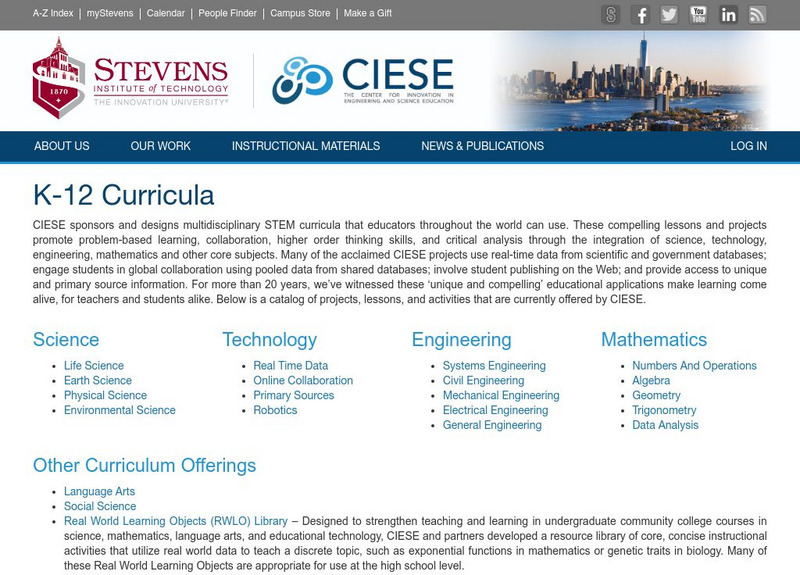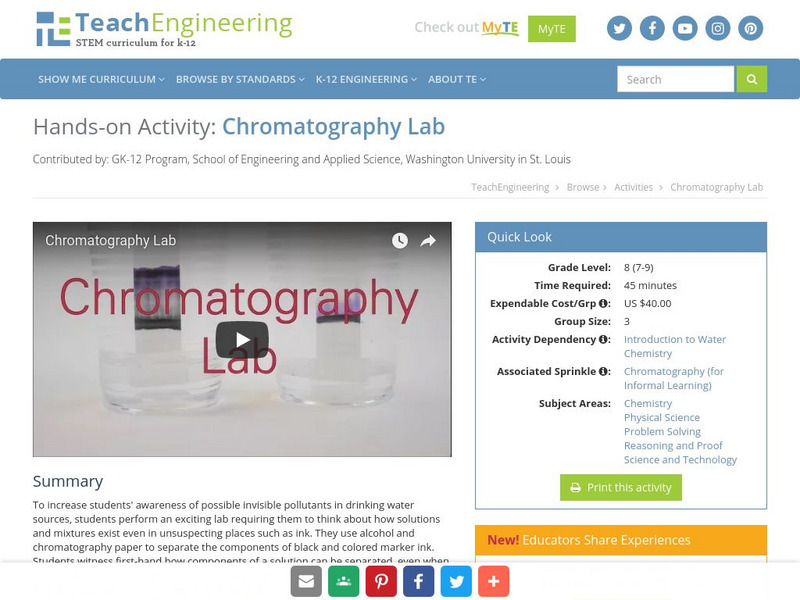Hi, what do you want to do?
University at Buffalo
Love Canal Collections: Love Canal Chronologies
Find chronologies from three different sources of Love Canal and its chemical contamination. Read about how the investigation of this environmental disaster progressed over the years.
Curated OER
Science Kids: Science Images: Water Pollution
This image helps highlight the problem of water pollution that can effect various rivers, lakes and other sources of water.
TeachEngineering
Teach Engineering: Moving Without Wheels
In a class demonstration, students observe a simple water cycle model to better understand its role in pollutant transport. This activity shows one way in which pollution is affected by the water cycle; it simulates a point source of...
Other
Planet Ark: World Environmental News
Welcome to Planet Ark's daily Reuters World Environment News - the most comprehensive source of environmental news on the Net. To read previous news stories, please use the search engine below to find stories relating to any...
Other
Filter of Hope: Clean Water of Life
Filter of Hope has developed a revolutionary, household water filter specifically for families living in abject poverty (less than $2/day) worldwide. Our filter removes all bacteria, protozoa and microorganisms from contaminated water...
NOAA
Noaa: Estuaries 101 Curriculum: Estuary and the Watershed San Francisco Bay
In this activity, students investigate a large watershed, look for sources of pollution in the watershed, and study the impacts of a rain storm on a watershed and estuary, without going on a field trip. Students investigate the nature of...
Other
Primer on Climate Change and Human Health [Pdf]
A comprehensive guide to climate change in Canada. This site offers both a national look and then looks at the implications of climate change on specific regions and provinces.
Other
How to smile.org: Store Water Runoff Pollution
A demonstration that shows students how water systems are connected and the concept of non-point source pollution. Also it allows students to see how pollution on their playground could affect larger water supplies.
US Environmental Protection Agency
Epa: Excuse Me, Is This the Way to the Drain Pipe? [Pdf]
Ever wonder where your drinking water comes from? And what happens to it after you're done? "Excuse Me, Is this the Way to the Drain Pipe?" is a great story and lesson plan about a drop of water going through the water cycle and through...
TeachEngineering
Teach Engineering: Who's Down the Well?
Drinking water comes from many different sources, including surface water and groundwater. Environmental engineers analyze the physical properties of groundwater to predict how and where surface contaminants will travel. In this lesson,...
TeachEngineering
Teach Engineering: The Great Pacific Garbage Patch
The Great Pacific Garbage Patch (GPGP) is an interesting and somewhat publicized environmental problem. A swirling soup of trash up to 10 meters deep and just below the water surface is composed mainly of non-degradable plastics. These...
PBS
Pbs Teachers: Helping Kids Help the Environment
Define and explore the concept of environmental citizenship through a series of literacy-based multimedia, online and hands-on learning experiences. Discover how responsible citizens can help protect their local communities by...
Mocomi & Anibrain Digital Technologies
Mocomi: Major Domains of the Earth Hydrosphere
Learn about the hydrosphere, the water cycle, the major threats to the hydrosphere, and environmental problems.
Other
The Dirty Dozen Persistent Organic Pollutants
Use this site to learn about the effects of persistent organic pollutants on the ecology of Antarctic coastal waters. Information is presented for both teacher and student researcher.
The Franklin Institute
The Franklin Institute Online: Slick Sea Spills
Use this site to promote environmental awareness in your classroom with this lesson plan on the effects of oil spills on water habitats.
Other
Epa New England: Long Island Sound Facts, Figures, and Maps
Listing of various fact sheets created and published through the Long Island Sound Study. Topics include How Low Dissolved Oxygen Conditions Affect Marine Life in LI, Impact of Atmospheric Nitrogen Deposition on Long Island Sound, Sound...
Center for Innovation in Engineering and Science Education, Stevens Institute of Technology
Ciese: K 12 Education Curriculum: Online Classroom Projects
This site presents projects for individual classrooms and collaborative projects that can be done with other classes or schools. Most of these are science projects.
TeachEngineering
Teach Engineering: An Underground River
Groundwater is one of the largest sources of drinking water, so environmental engineers need to understand groundwater flow in order to tap into this important resource. Environmental engineers also study groundwater to predict where...
TeachEngineering
Teach Engineering: You Are What You Drink!
Contamination in drinking water sources or watersheds can negatively affect the organisms that come in contact with it. The affects can be severe - causing illness or, in some cases, even death. It is important for people to understand...
TeachEngineering
Teach Engineering: Chromatography Lab
To increase students' awareness of possible invisible pollutants in drinking water sources, students perform an exciting lab requiring them to think about how solutions and mixtures exist even in unsuspecting places such as ink. They use...
NOAA
Noaa: It All Runs Down Hill [Pdf]
Read how freshwater moving across the surface of the Earth can become polluted and bad for the environment. Create a model that shows how water can become polluted as it flows downhill.
TeachEngineering
Teach Engineering: Introduction to Environmental Engineering
Learners are presented with examples of the types of problems that environmental engineers solve, specifically focusing on air and land quality issues. Air quality topics include air pollution sources, results of poor air quality...






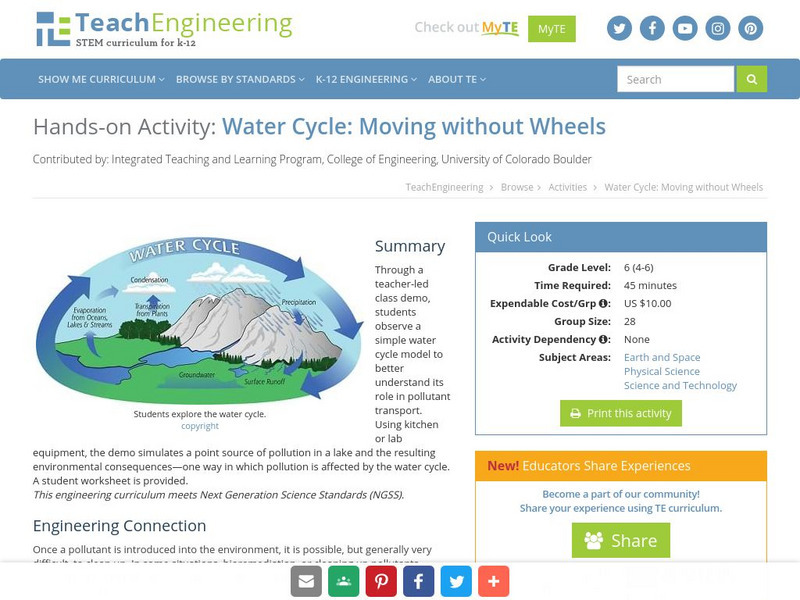

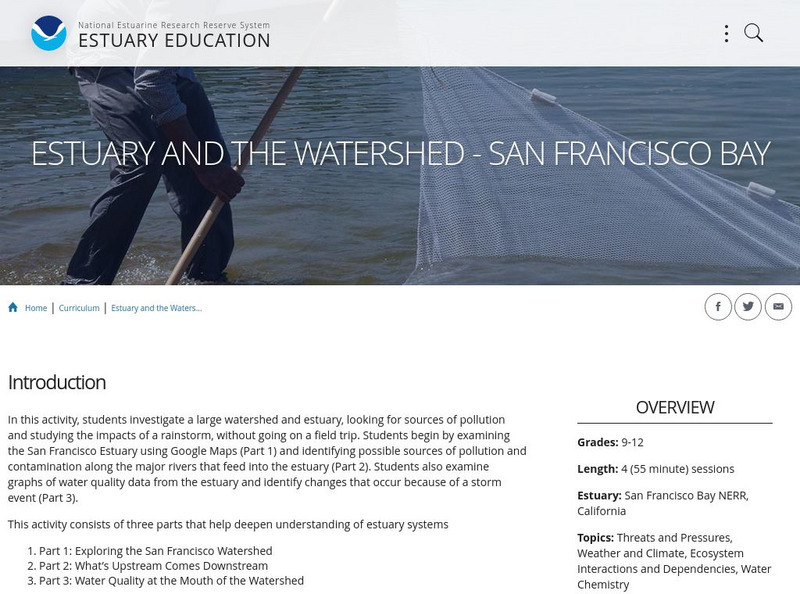

![Epa: Excuse Me, Is This the Way to the Drain Pipe? [Pdf] Lesson Plan Epa: Excuse Me, Is This the Way to the Drain Pipe? [Pdf] Lesson Plan](https://content.lessonplanet.com/knovation/original/38691-8e8499c77a908b9761fec8738a536bad.jpg?1661255988)

